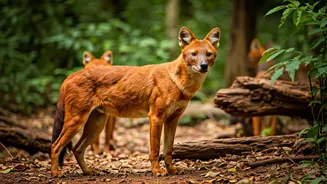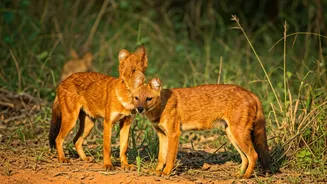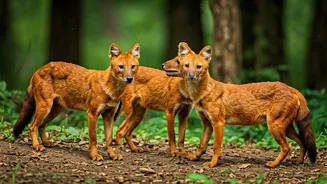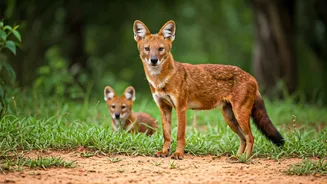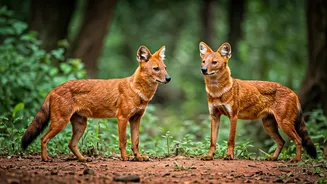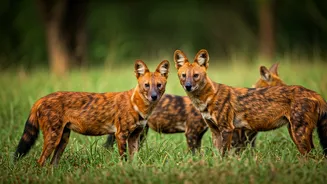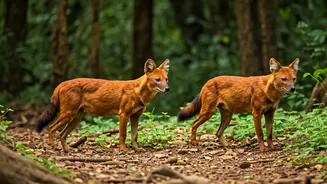Introduction to Dholes
Dholes, scientifically known as Cuon alpinus, are a unique canid species, often referred to as Asiatic wild dogs. They are distinguished by their reddish-brown
coats and bushy tails, and they live in packs with complex social structures. Dholes play an essential role in their ecosystems, helping to control prey populations and maintain biodiversity. However, they face numerous threats, including habitat loss, hunting, and disease, which have led to a decline in their numbers across their range. Conservation efforts are crucial to protect these animals.
Kanha National Park
Kanha National Park in Madhya Pradesh is a prominent sanctuary for dholes. The park’s diverse ecosystems, ranging from dense forests to open grasslands, provide an ideal habitat for these wild dogs. Visitors to Kanha have a good chance of spotting dholes while on safari. Conservation initiatives in Kanha include regular monitoring of dhole populations and habitat preservation, which are instrumental in supporting their survival. It is one of the most successful parks when it comes to wildlife conservation in India.
Bandhavgarh National Park
Bandhavgarh National Park, also located in Madhya Pradesh, is recognized for its high tiger density and also serves as a refuge for dholes. The park's varied terrain, featuring steep hills and lush valleys, creates a conducive environment for dholes to thrive. Dhole sightings are often reported in Bandhavgarh, allowing visitors to witness the interactions of the wild dogs. Conservation strategies include habitat restoration and community engagement. These efforts are particularly important in securing the future of these endangered wild dogs within the park’s boundary.
Nagarahole National Park
Nagarahole National Park in Karnataka is an essential habitat for a wide array of wildlife, including the dhole. The dense forests of Nagarahole offer a safe haven, and the abundance of prey species supports a healthy dhole population. Those visiting Nagarahole may be lucky enough to see packs of dholes hunting or resting. Conservation efforts in this area include anti-poaching patrols and community-based conservation programs. These actions are vital in mitigating threats and protecting the dholes' habitat.
Periyar National Park
Periyar National Park in Kerala, famed for its scenic beauty and rich biodiversity, is home to dholes. The park's evergreen forests and the Periyar Lake provide a favorable environment for dholes. While sightings are relatively less common here, the park still actively works towards conserving its dhole population. Conservation programs include habitat management and community involvement. The park's management ensures the protection of the dholes and other wildlife.
Tadoba National Park
Tadoba National Park in Maharashtra is another key location that supports the dhole population. The park's dry deciduous forests provide shelter, and an abundance of prey makes it a suitable habitat. Conservation initiatives in Tadoba include habitat protection and regular monitoring of animal populations. The park is an excellent place to see dholes in their natural settings. The efforts show the need to protect the habitat and ensure the survival of these wild dogs.
